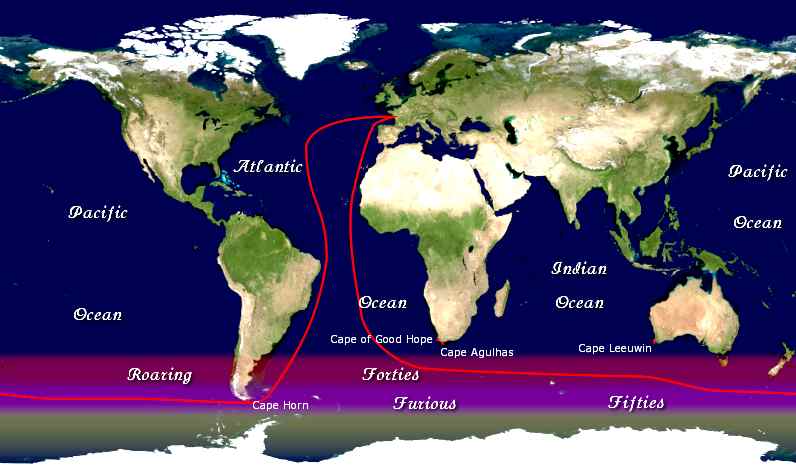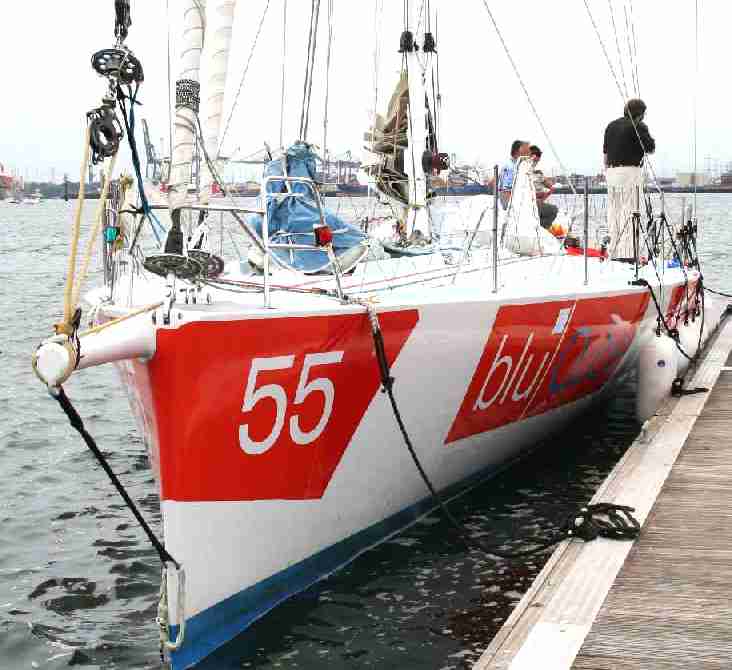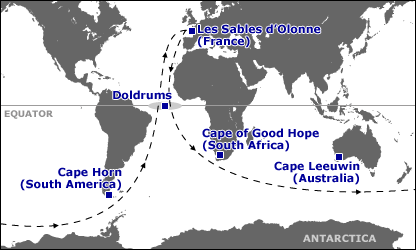|
THE VENDEE GLOBE
|
||||||||||||||||||||||||||||||||||||||||||||||||||||||||||||||||||||||||||||||||||||||||||||||||||||||||||||||||||||||||||||||||||||||||||||||||||||||||||||||||||||||||||||||||||||||||||||||||||||||||||||||||||||||||||||||||||||||||||||||||||||||||||||||||||||||||||||||||||||||||||||||||||||||||||||||||||||||||||||||||||||||||||||||||||||||||||||||||||||||||||||||||||||||||||||||||||||||||||||||||||||||||
|
HOME | BIOLOGY | FILMS | GEOGRAPHY | HISTORY | INDEX | INVESTORS | MUSIC | NEWS | SOLAR BOATS | SPORT |
||||||||||||||||||||||||||||||||||||||||||||||||||||||||||||||||||||||||||||||||||||||||||||||||||||||||||||||||||||||||||||||||||||||||||||||||||||||||||||||||||||||||||||||||||||||||||||||||||||||||||||||||||||||||||||||||||||||||||||||||||||||||||||||||||||||||||||||||||||||||||||||||||||||||||||||||||||||||||||||||||||||||||||||||||||||||||||||||||||||||||||||||||||||||||||||||||||||||||||||||||||||||
|
The Vendée Globe is a round-the-world single-handed yacht race, sailed non-stop and without assistance. The race was founded by Philippe Jeantot in 1989, and since 1992 has taken place every four years.
As the only single-handed non-stop round-the-world race (in contrast to the VELUX 5 Oceans Race, which is sailed in stages), the race is a serious test of individual endurance, and is regarded by many as the ultimate in ocean racing.
Vendée Globe race route map
History
The race was founded in 1989 by French yachtsman Philippe Jeantot. Jeantot had competed in the BOC Challenge (now the VELUX 5 Oceans Race) in 1982-1983 and 1986-1987, winning both times; dissatisfied with the "stopping" format, he decided to set up a new non-stop race, which he felt would be the ultimate challenge for single-handed sailors.
The first edition of the race was run in 1989-1990, and was won by Titouan Lamazou; Jeantot himself took part, and placed fourth. The next edition of the race was in 1992-1993; since then it has been run every four years.
The boats
The race is open to monohull yachts conforming to the Open 60 class criteria. (Prior to 2004, the race was also open to Open 50 boats.) The Open classes are unrestricted in certain aspects but a box rule governs parameters such as overall length, draught, appendages and stability, as well as numerous other safety features.
The race
The race starts and finishes in Les Sables-d'Olonne, in the Vendée département of France; both Les Sables d’Olonne and the Vendée Conseil Général are official race sponsors. The course is essentially a circumnavigation along the clipper route: from Les Sables d’Olonne, down the Atlantic Ocean to the Cape of Good Hope; then clockwise around Antarctica, keeping Cape Leeuwin and Cape Horn to port; then back to Les Sables d’Olonne. The race generally runs from November to February; it is timed to place the competitors in the Southern Ocean in summer.
Additional waypoints may be set in the sailing instructions for a particular race, in order to ensure safety relative to ice conditions, etc. For example, in 2004, the racers had to pass north of the following flexible waypoints:
The competitors may stop at anchor, but may not draw alongside a quay or another vessel; and they may receive no outside assistance, including customised weather or routing information. The only exception is that a competitor who has an early problem may return to the start for repairs and then re-start the race, as long the re-start is within 10 days of the official start.
The race presents significant challenges; most notably the severe wind and wave conditions in the Southern Ocean, the long unassisted duration of the race, and the fact that the course takes competitors far from the reach of any normal emergency response. A significant proportion of the entrants usually retire, and in the 1996-1997 race Canadian Gerry Roufs was tragically lost at sea.
To mitigate the risks, competitors are required to undergo medical and survival courses. They must also be able to demonstrate prior racing experience; either a completed single-handed trans-oceanic race, or a completion of the previous Vendée Globe. The qualifying passage must have been completed on the same boat to be raced in the Vendée; or the competitor must complete an additional trans-oceanic observation passage, of not less than 2,500 miles, in that boat, at an average speed of at least 7 knots (13 km/h). Since trans-ocean races typically have significant qualifying criteria of their own, any entrant to the Vendée will have amassed substantial sailing experience.
Open 60 racing yacht - White Ocean Racing Vendee Globe contender seeking sponsorship for 2008
Previous results
1989-1990
The inaugural edition of the race was led from early on by the eventual winner, Titouan Lamazou, on Ecureuil d'Aquitaine II. Philippe Jeantot, the race's founder, had problems with breakdowns, and then unfavourable winds, which held him back from the race lead. Philippe Poupon's ketch Fleury Michon X capsized in the Southern Ocean; Poupon was rescued by Loïck Peyron, who finally finished second, in what was generally a successful first run of the race.
1992-1993
The second edition of the race attracted a great deal of media coverage; with several participants from the first race, and some promising newcomers, it was set to be an exciting event. Unfortunately, American Mike Plant, one of the entrants in the first race, failed to make the start; he was lost at sea on the way to the race.
The race set off into extremely bad weather in the Bay of Biscay; several racers returned to the start to make repairs, before setting off again (the only stopover allowed by the rules). Four days after the start, British sailor Nigel Burgess was found drowned off Cape Finisterre, having presumably fallen overboard. Alain Gautier and Bertrand de Broc led the race down the Atlantic; however, keel problems forced de Broc to retire in New Zealand. Gautier continued with Philippe Poupon close behind, but a dismasting close to the finish held Poupon back and gave second place to Jean-Luc van den Heede.
1996-1997
Another heavy-weather start in the Bay of Biscay knocked Nandor Fa and Didier Munduteguy out of the race early; several others once again returned to the start for repairs before continuing. The rest of the fleet raced to the Southern Ocean, where a second attrition began. Yves Parlier was knocked out after hitting ice, and Isabelle Autissier had rudder damage, leaving Christophe Auguin to lead the way into the south.
Heavy weather took a more serious toll in the far Southern Ocean. Raphaël Dinelli was capsized and dramatically rescued by Pete Goss; then, within a few hours of each other, Thierry Dubois and Tony Bullimore were capsized, and rescued by Australian rescue teams. Finally, contact was lost with Gerry Roufs; despite four of the racers combing the ocean, no trace of him was found.
The race was won by Christophe Auguin; and Catherine Chabaud, sixth and last, was the first woman to finish the race.
Pete Goss was later awarded the Légion d'honneur for his rescue of Dinelli. The capsize of several boats in this race prompted tightening up of the safety rules for entrants, particularly regarding boat safety and stability.
The book Godforsaken Sea: The True Story of a Race Through the World's Most Dangerous Waters by Derek Lundy profiles this edition of the race.
2000-2001
This race was the first major test of the new safety rules, introduced following the tragedy in the previous race. Overall, it was a success; although some boats were again forced to retire from the race, none were lost. This race also featured the youngest entrant ever; Ellen MacArthur of the UK, who at 24 years old had managed to put together a serious campaign with her custom-built boat Kingfisher.
Yves Parlier of France, on Aquitaine Innovations, was the first to establish a lead; however, this was soon under attack by Michel Desjoyeaux on PRB, who moved into the lead. Pushing hard to catch up, Parlier was dismasted and lost contact with race organisers. MacArthur diverted to render assistance, but was then told to resume racing when contact with Parlier was restored, and managed to maintain fourth place.
Desjoyeaux extended his lead to 600 miles by Cape Horn; however, MacArthur was closing steadily, having moved up to second place. By the mid-Atlantic she had caught up, and while negotiating the calms and variable winds of the Doldrums, the two traded the lead position several times.
MacArthur's chances of a win were ruined when she struck a semi-submerged container and was forced to make repairs. Desjoyeaux won the race; but MacArthur pulled in just over a day later, to a rapturous reception, as the fastest single-handed woman around the planet. Parlier, meanwhile, had anchored off New Zealand, and managed to fabricate a new carbon-fibre mast from the remains of his broken mast, all without outside assistance. He continued racing, and gained an official place.
2004-2005
300,000 people watched the start of the 2004 race, which for once took place in mild weather. A fast start was followed by a few minor equipment problems; still, the first racers crossed the equator after just 10 days, 3 days faster than the previous race, and all of the starters were still sailing.
Attrition began on entry into the roaring forties: Alex Thomson diverted to Cape Town to make unassisted repairs and continue racing, and a number of other problems hit the fleet; then Hervé Laurent retired with serious rudder problems. Thomson retired, and Conrad Humphreys anchored to make unassisted rudder repairs. Gear problems and retirements continued; then the fleet ran into an area of ice, with Sébastien Josse hitting a berg head-on.
As the fleet re-entered the Atlantic, the lead changed several times; the race remained close right to the finish, which saw three boats finish within 29 hours.
S.A.E.M Vendée20,
rue Pasteur – BP206 Philippe de Villiers President Sophie Vercelletto CEO sophie.vercelletto@vendeeglobe.fr
Starts 9th November 2008 - don't be late
LINKS and REFERENCE
Thursday, May 31, 2007 Jean-Pierre Dick’s qualifying run Friday, May 11, 2007 Top names already signed up for the 2008 Vendée Globe... Friday, May 11, 2007 Zidane has christened the new Generali monohull Wednesday, May 02, 2007 The IMOCA class in the news... Friday, April 20, 2007 Launch of the new 60´ Generali Friday, February 16, 2007 The new Paprec-Virbac is sailing... Thursday, February 08, 2007 A new Open 60 being built for Jonny Malbon Tuesday, February 06, 2007 The Imoca class has named a new executive director Friday, February 02, 2007 Paprec-Virbac launched in Tauranga (New Zealand) Wednesday, January 24, 2007 Yann Eliès unveils the new 60´ Generali Friday, January 12, 2007 Dee Caffari is launching the construction of a new 60-foot boat Monday, November 13, 2006 60-foot IMOCA boats celebrated Tuesday, October 31, 2006 The round the world yachtsmen offer themselves a Rum Friday, October 06, 2006 The new PRB named this morning in Les Sables d´Olonne Thursday, October 05, 2006 The first Canadian monohull to line up for the Vendée Globe Friday, September 22, 2006 Armel Le Cléac´h sets his sights on the Vendée Globe Thursday, September 14, 2006 Kito de Pavant to enter the 2008 Vendée Globe Wednesday, September 06, 2006 Vincent Riou presents his new PRB Monday, September 04, 2006 The new Open 60 Delta Dore has been launched... Friday, August 18, 2006 The construction of the new SAFRAN monohull Saturday, August 05, 2006 The ex-Aquitaine Innovations to be in the next Vendée Globe? Friday, July 28, 2006 Three round the world voyages for Alex Thomson Wednesday, July 26, 2006 Temenos II being transported to Europe Thursday, July 20, 2006 Jean Le Cam is sailing under the colours of VM Matériaux Tuesday, July 04, 2006 The new Temenos has been sailing Friday, June 23, 2006 The new PRB has been assembled Wednesday, June 21, 2006 The construction of Delta Dore: a race against the clock... Tuesday, June 20, 2006 Mike Golding wins the SNSM race Wednesday, June 14, 2006 The new Temenos has been launched Sunday, June 11, 2006 The new PRB ready to be assembled Thursday, June 01, 2006 Bernard Stamm will be racing in the 2008 Vendée Globe Friday, May 05, 2006 What’s been going on since the finish of the 5th Vendée Globe? Friday, May 06, 2005 The Vendee Globe Prize Giving live on the website !
Healthier alternative tastes for adventure capitalists
Solar Red | Solar Crush | Solar Cola | Solar Spice | Solar +
|
||||||||||||||||||||||||||||||||||||||||||||||||||||||||||||||||||||||||||||||||||||||||||||||||||||||||||||||||||||||||||||||||||||||||||||||||||||||||||||||||||||||||||||||||||||||||||||||||||||||||||||||||||||||||||||||||||||||||||||||||||||||||||||||||||||||||||||||||||||||||||||||||||||||||||||||||||||||||||||||||||||||||||||||||||||||||||||||||||||||||||||||||||||||||||||||||||||||||||||||||||||||||
|
This website is Copyright © 1999 & 2019. All rights reserved. All other trademarks are hereby acknowledged. Max Energy Limited is an educational charity.
|
||||||||||||||||||||||||||||||||||||||||||||||||||||||||||||||||||||||||||||||||||||||||||||||||||||||||||||||||||||||||||||||||||||||||||||||||||||||||||||||||||||||||||||||||||||||||||||||||||||||||||||||||||||||||||||||||||||||||||||||||||||||||||||||||||||||||||||||||||||||||||||||||||||||||||||||||||||||||||||||||||||||||||||||||||||||||||||||||||||||||||||||||||||||||||||||||||||||||||||||||||||||||




